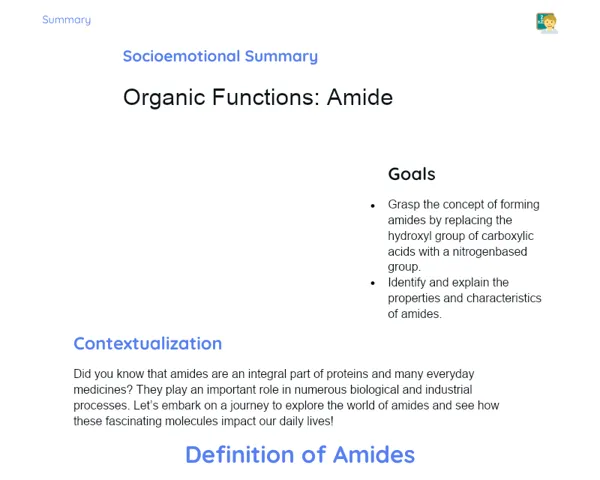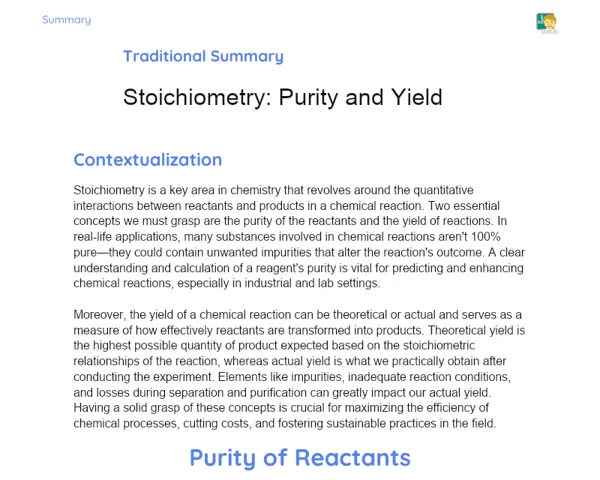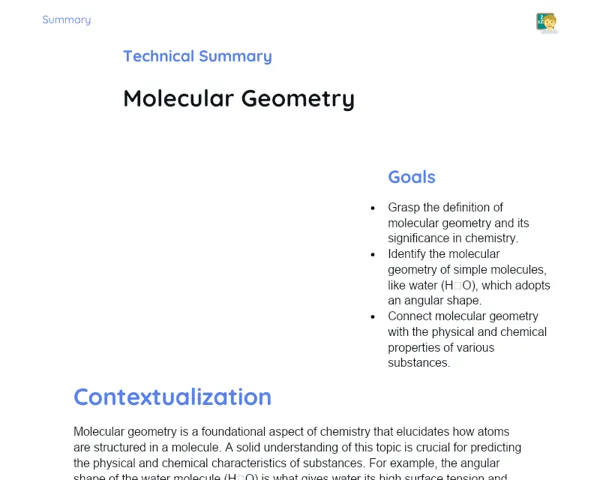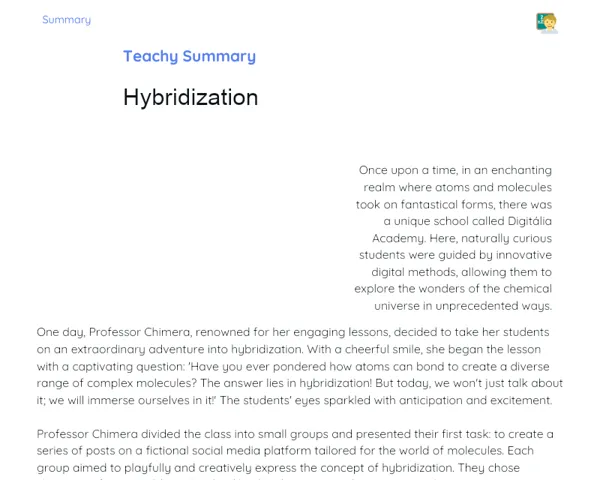Objectives
1. 🎯 Get a clear understanding of how solution dilution works and learn to calculate new concentrations from dilutions.
2. 🎯 Build both practical and theoretical skills to effectively use molarity in everyday lab situations.
Contextualization
Did you know that solution dilution is a vital skill not only in laboratories but also in industries like pharmaceuticals, food processing, and more? For instance, in medicine manufacturing, precise dilution ensures that drugs are both safe and effective. This technique is equally important in emergency setups—for example, in hospitals where fast preparation of diluted reagents can be critical. Clearly, mastering solution dilution extends far beyond the chemistry lab and is very useful in many real-life scenarios.
Important Topics
Dilution Calculation
Calculating dilutions is essential when you need to prepare solutions of specific concentrations from a concentrated stock. This method involves adding a measured volume of solvent to the original solution, thereby achieving a lower concentration. The process hinges on carefully using the dilution equation, which connects the concentrations before and after dilution with the respective volumes used.
-
We typically use the dilution formula C1V1 = C2V2, where C1 and V1 represent the concentration and volume of the stock solution, and C2 and V2 are those of the diluted solution.
-
Accurate dilution calculations are critical in both laboratories and industries to prepare chemical solutions precisely, helping to minimise wastage and ensure the desired effectiveness of reactions and products.
-
Regular practice with these calculations helps students understand the vital relationship between concentration and volume—a fundamental concept in chemistry.
Molarity
Molarity defines the concentration of a solution in terms of moles of solute per litre of solution. This concept explains the ratio of solute to solvent and is frequently employed in dilution calculations. Remember, when a solution is diluted, its molarity decreases, as the two are inversely related.
-
You calculate molarity (M) by dividing the number of moles of solute by the volume (in litres) of the solution.
-
A good grasp of molarity helps students predict and manage the behaviour of solutions during chemical reactions, and it is also key when standardising reagents.
-
In dilution problems, understanding molarity helps determine the exact amounts of solute and solvent required to achieve a target concentration.
Practical Applications of Dilution
Dilution has a wide range of practical applications spanning research laboratories, the pharmaceutical sector, and even the food industry. In everyday practice, dilution techniques help adjust solution concentrations to meet specific requirements, whether it's in a scientific experiment or manufacturing a medication where precision is paramount.
-
In labs, dilution is commonly used to prepare standard solutions, uphold quality control, and calibrate instruments.
-
In pharmaceutical industries, proper dilution is vital to ensure that active ingredients in medications are maintained at safe and effective levels.
-
The ability to perform precise dilutions is also crucial in emergency situations, such as treating poisonings, where quick and accurate dilution can be life-saving.
Key Terms
-
Dilution: The method of lowering a solution's concentration by adding a solvent.
-
Molarity (M): The measure of a solution's concentration, expressed as moles of solute per litre.
-
Stock Solution: A concentrated solution used as the starting point to prepare solutions of lower concentrations through dilution.
For Reflection
-
How does precise dilution affect the safety and effectiveness of medications?
-
Why is it important to understand and correctly apply the dilution equation (C1V1 = C2V2) in both lab and industrial settings?
-
In what ways can the skill of calculating and preparing diluted solutions be useful outside the classroom, for instance in everyday or emergency scenarios?
Important Conclusions
-
We have examined the basics of solution dilutions and learned how adding solvents can adjust concentrations to meet specific needs.
-
We discussed the role of molarity and its critical importance in accurately calculating dilutions, whether in labs or in practical fields like the pharmaceutical industry.
-
We acknowledge that mastering dilution calculations and using formulas like C1V1 = C2V2 equips us with skills that have practical, real-world applications—from preparing standard solutions in labs to managing emergency situations.
To Exercise Knowledge
- Home Calculations: Practice exercises in dilution calculations using various solutes and solvents. Experiment by varying the initial concentrations to challenge your understanding.
- Online Simulations: Explore interactive online simulations on solution dilution to observe the effect of different volumes and concentrations.
- Dilution Journal: Maintain a journal documenting your dilution exercises, including calculations, procedures, and observations. This will help reinforce your learning and highlight areas needing revision.
Challenge
🌟 Magical Chemist Challenge 🌟: Imagine yourself as a chemist with a magical ability to instantly dilute any solution. Devise a scenario where you need to help your community solve a problem using your ‘magical’ dilution skills. Describe the problem, list the necessary solutions, and explain how you would apply dilution techniques to resolve the issue. Let your creativity shine and use your dilution expertise in a novel way!
Study Tips
-
Regularly revise the formulas and key concepts of dilution to keep them fresh in your mind. Practice with a variety of problems to boost your proficiency.
-
Discuss with your peers or colleagues about different real-world applications of dilution. Such interactions can strengthen your understanding and show chemistry in action.
-
Make use of online resources like educational videos and interactive tutorials to better visualise and deepen your knowledge of solution dilution.



